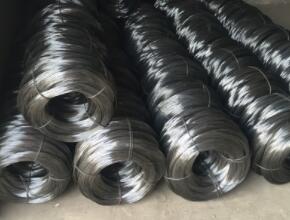Understanding Welded Wire Reinforcement Sizes A Comprehensive Guide
Welded wire reinforcement (WWR) is an essential material in the construction industry, used primarily to enhance the strength and durability of concrete structures. Its versatility and efficiency make it ideal for various applications, ranging from industrial flooring to residential foundations. However, understanding the various sizes and specifications is crucial for engineers, architects, and contractors to ensure structural integrity and safety.
What is Welded Wire Reinforcement?
Welded wire reinforcement consists of a series of intersecting steel wires that are electrically welded together at specified intervals. This creates a grid-like pattern, which can be customized in terms of wire diameter, spacing, and sheet sizes. The reinforcement helps distribute loads evenly across the concrete, minimizing crack formation and improving overall structural performance.
Common Sizes of Welded Wire Reinforcement
WWR is available in several sizes, typically defined by the diameter of the wire and the spacing between the wires. The most commonly used diameters range from 6 gauge (approximately 0.192 inches) to 10 gauge (approximately 0.10 inches). The spacing can vary from 4 inches to 12 inches, depending on the specific application and load requirements.
For instance, a common size for residential applications might be W2.0 × W2.0, which signifies a welded wire reinforcement sheet where the vertical and horizontal wires are both 2 inches apart. This is often used in slabs for floors, providing adequate support while maintaining workability during the pouring process.
Factors Influencing WWR Size Selection
welded wire reinforcement sizes

When choosing the appropriate size of welded wire reinforcement, several factors must be considered
1. Load Requirements Understanding the structural loads that the concrete will bear is crucial. Heavier loads necessitate larger gauge wire or closer spacing between wires.
2. Type of Construction Different applications—such as driveways, sidewalks, or industrial floors—will have varying requirements, influencing the size of WWR needed.
3. Local Codes and Regulations Building codes often dictate specific reinforcement requirements based on the local environment, seismic activity, and building type.
4. Cost Efficiency While thicker wires and closer spacings provide enhanced strength, they may increase material costs. Balancing quality and budget is vital.
Conclusion
Welded wire reinforcement plays a pivotal role in enhancing the durability and performance of concrete structures. By understanding the various sizes and specifications, professionals can better select the right WWR for their projects. Properly chosen and installed WWR not only contributes to the resilience and longevity of a structure but also ensures compliance with safety standards and building regulations. As the construction industry continues to evolve, keeping abreast of advancements in WWR technology and specifications will be key to successful project execution.

















